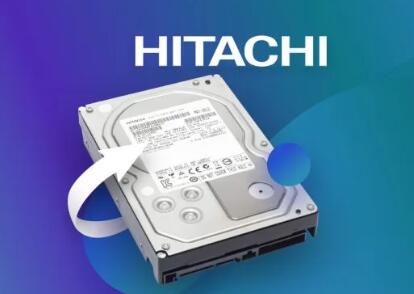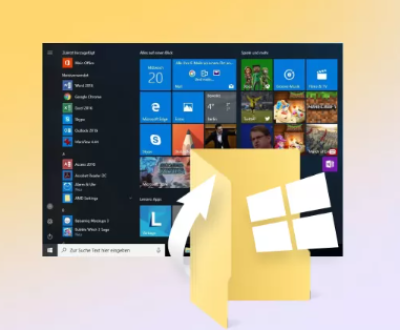To recover deleted data from a hard disk, follow these steps and understand the techniques and tools that can help restore your files.
1. Basics of Data Deletion
When files are deleted from a hard disk, the data isn’t immediately erased from the physical storage. Instead, the operating system marks the space occupied by the file as “free,” which means that the data is still there but is no longer accessible through normal means. The real deletion happens when new data overwrites that space, which is why it’s crucial to act quickly when you realize you’ve lost data.
2. Check the Recycle Bin or Trash
The first thing to check when you’ve deleted files is the Recycle Bin (on Windows) or Trash (on Mac). These are temporary storage locations where deleted files are kept until they are permanently removed. To recover files from the Recycle Bin:

Windows:
Open the Recycle Bin from the desktop.
Locate the files you want to restore.
Right-click the file(s) and select “Restore.”
Mac:
Open the Trash from the Dock.
Locate the deleted file.
Right-click and choose “Put Back.”
If the files aren’t in the Recycle Bin or Trash, proceed with more advanced recovery methods.
3. Use File History or Time Machine
If you’re using Windows or Mac, file backup features like File History (Windows) or Time Machine (Mac) may have automatically saved copies of your files. These can be excellent recovery options if your deleted data was backed up before the deletion occurred.
Windows File History:
Open the folder where the deleted file was located.
Right-click and choose “Restore previous versions.”
Select a version from the date before the deletion and restore the file.
Mac Time Machine:
Open the folder where the deleted file was located.
Open Time Machine from the Applications folder.
Use the timeline to navigate to a time before the deletion and restore the file.
4. Try a Data Recovery Software Tool
Panda Assistant is a robust and user-friendly data recovery software designed to help individuals and businesses recover lost, deleted, or corrupted files from various storage devices, including hard drives, USB drives, memory cards, and external storage devices. It provides an easy-to-use solution for people who have lost important data due to accidental deletion, system crashes, formatting errors, virus attacks, or other unforeseen circumstances.
With Panda Assistant, you can retrieve files that have been deleted from the Recycle Bin, as well as files lost from formatted or corrupted drives. Whether you’re trying to recover precious photos, documents, videos, or audio files, Panda Assistant provides a comprehensive solution for all your data recovery needs. The software supports a wide range of file types, including documents, images, videos, music files, and even emails.
Key Features of Panda Assistant:
Easy-to-Use Interface: One of the standout features of Panda Assistant is its intuitive and user-friendly interface. The software is designed with both beginners and experienced users in mind, ensuring that anyone can use it without prior technical knowledge. The recovery process is straightforward, guiding users step-by-step to locate and restore their lost files.
Multiple Recovery Scenarios: Panda Assistant can recover data from a variety of situations, including accidental deletion, file system corruption, virus infections, hard drive failures, and formatted drives. Whether the data loss is caused by human error or system malfunction, Panda Assistant can help retrieve your valuable files.
Powerful Scanning Modes: The software offers two main scanning modes: Quick Scan and Deep Scan. Quick Scan is designed to search for recently deleted files, making it ideal for those who need to recover files that were accidentally deleted but have not yet been overwritten. Deep Scan, on the other hand, performs a more thorough scan of the storage device, locating lost files that may have been damaged or hidden due to severe data loss or corruption.
File Preview: Before recovering files, Panda Assistant allows you to preview the detected files to ensure that they are indeed the ones you need. This feature saves time and helps prevent the recovery of unnecessary files. You can view documents, photos, videos, and other file types to confirm their integrity and relevance to your recovery needs.
Cross-Platform Support: Panda Assistant is compatible with both Windows and Mac operating systems, making it a versatile tool for a wide range of users. Whether you’re working on a Windows PC or a Mac, you can use Panda Assistant to recover lost data efficiently.
Supports Various Storage Devices: Panda Assistant works with a wide variety of storage devices, including internal and external hard drives, USB flash drives, SD cards, and memory cards from digital cameras, smartphones, and other portable devices. This makes it an excellent tool for retrieving lost files from not only desktop and laptop computers but also mobile devices and external storage solutions.
Safe and Secure Recovery: The software ensures that the recovery process is safe and secure. It performs the recovery process in a way that avoids further damage to the original data. This is crucial to ensure that no new data overwrites the lost files, which would make them impossible to recover.
Preview and Selective Recovery: Panda Assistant offers the ability to preview files before restoring them. This feature allows users to selectively choose which files to recover, saving time and ensuring that only relevant files are restored.
5. Use Windows Command Prompt (CHKDSK)
If you’re unable to recover data using recovery software, it may be worth checking your hard drive for errors or bad sectors, especially if the deletion resulted from a system crash or file corruption. On Windows, you can use CHKDSK (Check Disk) to scan and repair the drive, which may help recover lost files.
Steps for Running CHKDSK:
Open the Command Prompt as Administrator (right-click on the Start menu and select Command Prompt (Admin)).
Type the command:
chkdsk
Replace “C” with the letter of your affected drive.
Press Enter. The command will check for disk errors and attempt to recover bad sectors.
After the scan completes, check if the deleted files are recoverable.
6. Use Data Recovery from a Backup Image
If you’ve created a disk image of your hard drive or a system image backup, you may be able to restore deleted files from that backup.
Steps to Restore Data from a Backup Image:
Open the backup software (such as Acronis True Image or Macrium Reflect).
Locate the backup image that contains the deleted files.
Select the specific files or folders that you need to recover.
Restore the files to a different location.
7. Advanced Recovery Options for Corrupted Drives
If the hard disk itself is corrupted and causing data loss, you might need to use advanced recovery methods, such as disk repair tools or professional recovery services.
For physical damage: If the hard drive has sustained physical damage (such as a head crash or motor failure), it may need to be repaired by professionals. These services can recover data from damaged hard drives in a cleanroom environment.
For logical damage: In cases of logical damage (such as corrupted partitions or file systems), software tools like TestDisk or PhotoRec can often help recover lost data. TestDisk is a powerful open-source utility that can recover lost partitions and repair file systems.
8. Use Professional Data Recovery Services
If none of the above methods work or if the data is critical, professional data recovery services are the last resort. These services are typically offered by specialized companies that have the tools and expertise to recover data from severely damaged or corrupted drives.
Here’s what the process generally involves:
You send your damaged hard drive to a professional recovery company.
They perform diagnostic tests and provide an estimate of the recovery costs.
If you approve, they will attempt to recover the data.
You receive the recovered data on a new drive or storage medium.
Some well-known data recovery services include:
DriveSavers
Ontrack
Secure Data Recovery
Keep in mind that professional recovery can be expensive, with costs ranging from a few hundred to several thousand dollars depending on the severity of the damage.
9. Prevent Future Data Loss
Once you’ve successfully recovered your files (or even if you haven’t), it’s essential to take steps to prevent future data loss. Implementing a proper backup strategy is crucial.
Regular Backups: Use cloud services or external drives to back up your data on a schedule.
RAID Setup: For critical data, consider using a RAID setup that provides redundancy in case of drive failure.
Cloud Storage: Use services like Google Drive, Dropbox, or OneDrive to keep important files backed up in the cloud.
Backup Software: Use automated backup software that continuously or periodically backs up your files to a safe location.
About us and this blog
Panda Assistant is built on the latest data recovery algorithms, ensuring that no file is too damaged, too lost, or too corrupted to be recovered.
Request a free quote
We believe that data recovery shouldn’t be a daunting task. That’s why we’ve designed Panda Assistant to be as easy to use as it is powerful. With a few clicks, you can initiate a scan, preview recoverable files, and restore your data all within a matter of minutes.
Subscribe to our newsletter!
More from our blog
See all postsRecent Posts
- How to recover accidentally deleted files 2025-07-01
- How do i recover a file i accidentally deleted 2025-07-01
- How to recover an accidentally deleted file 2025-07-01

 Try lt Free
Try lt Free Recovery success rate of up to
Recovery success rate of up to









